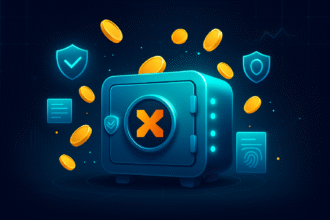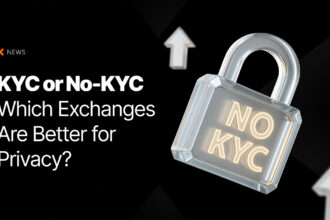Blockchain is often called a groundbreaking technology. But at its core, it’s a straightforward system designed to record and verify information securely and transparently. If you’re new to crypto or just curious about how this technology works, this guide will walk you through this process, step by step.
What Is Blockchain?
At its simplest, blockchain is a distributed ledger, which is a digital record of transactions shared across a network of computers. Instead of one central authority holding all the data, copies of the ledger are held by many participants. This ensures no single party can manipulate the information. Think of it like a shared Google Sheet, but way more secure and permanent.
The Core Structure of Blockchains
The data in a blockchain is stored in blocks. These are groups of transaction records bundled together. Once a block fills up, it’s time to add it to the chain. But here’s the catch: each block contains a unique identifier called a hash, which is generated from its data. Importantly, every block also includes the hash of the previous block, linking them together.
Because each block depends on the one before it, altering any transaction would require recalculating all subsequent blocks, which is computationally impractical on large networks. This linkage is what makes blockchain tamper-resistant.
How Are Blocks Added?
To keep the ledger trustworthy, blockchain networks use a process called consensus to agree on which transactions are valid and which block gets added next.
- Proof of Work (PoW): Used by Bitcoin, this method involves computers racing to solve complex puzzles. The first to solve it adds the block and earns a reward. While secure, PoW requires a lot of electricity.
- Proof of Stake (PoS): More energy-friendly, PoS selects validators based on how many coins they hold and are willing to “stake” as collateral. This approach reduces energy use by over 99% compared to PoW and is gaining popularity.
Transparency and Security Built-In
One unique feature of public blockchains is that every transaction is permanently recorded and visible. While addresses are pseudonymous (they don’t reveal your real identity), all activity is traceable on the ledger. This transparency helps prevent fraud and increases trust. In addition, this technology uses cryptography to secure data. Transactions are signed with private keys, ensuring only the owner can authorize transfers.
Beyond Transactions: Smart Contracts
This system isn’t just a ledger. It can also automate agreements through smart contracts. These are programs that automatically execute terms coded directly into the system. For example, a smart contract can release payment once certain conditions are met, eliminating the need for middlemen and speeding up processes.
How Blockchain Is Becoming More Connected
Initially, blockchains were isolated networks. Today, bridges between these systems allow different ones to communicate and exchange assets. This interoperability is laying the foundation for a future “Internet of Blockchains”, where users can seamlessly move data and value across platforms.
Why Should You Understand This Technology?
Whether you’re trading cryptocurrencies, developing apps or just curious, knowing how this technology works can empower you to make informed decisions about it. It explains why transactions can be trusted without banks, why digital assets can’t be easily faked and how new systems like decentralized finance and identity management are possible.
In Summary
Getting comfortable with how blockchain works can be very important nowadays, as this technology is being used in a variety of areas, including cryptocurrencies. Simply put, blockchain stores transaction data in linked blocks and each block’s hash depends on the previous one, making tampering nearly impossible. Also, consensus methods like Proof of Work and Proof of Stake are used in order to ensure network agreement. So, there you have it, this is basically how blockchain works. You can check our more crypto news on ICOPAX Blog.









